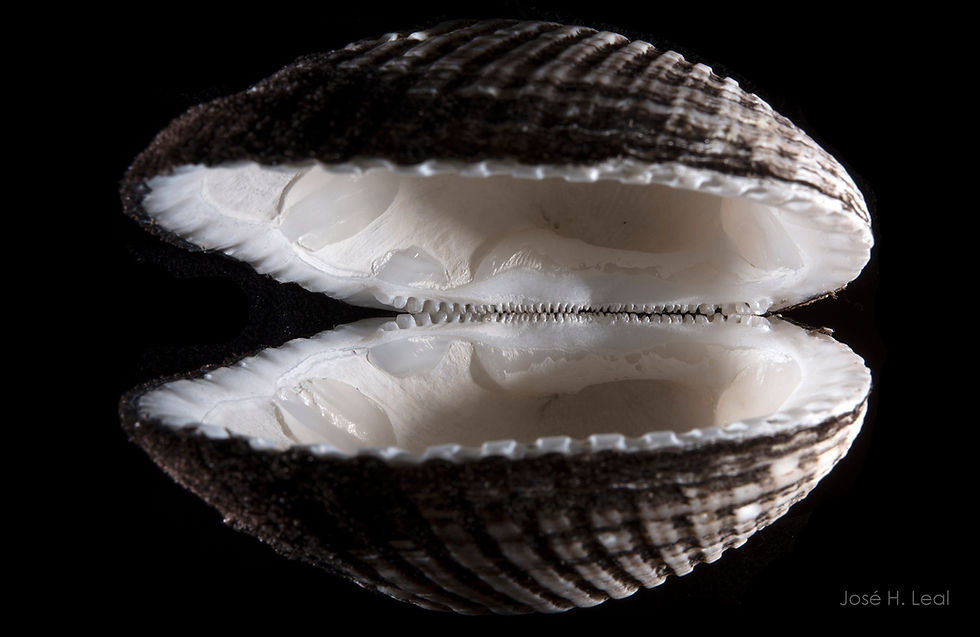The Ugly Duckling Clam
- José H. Leal
- Aug 6, 2021
- 1 min read
Despite its status as a very common local species in Southwest Florida (and far from being an attractive bivalve), the Ponderous Ark, Noetia ponderosa, is one of my favorite local species. There are a few reasons for that. The photo below explores a different angle and lighting to show cool internal features and structures of the shell in that species. Look at the hinge with its many small teeth and the intricate pattern of different scars indicating areas of muscle attachment of the living animal to its shell!

To me, one of the most striking features of this species is its dark-brown or black, velvet-like periostracum, the organic shell layer that covers part or the entire shell. (Visiting beachgoers often confuse the periostracum of the Ponderous Ark for some form of dirt, oil, or tar that deposited onto the white shell. This misconception was particularly common after the 2010 BP Oil Spill deep in the Gulf of Mexico.)

Another feature that sets the Ponderous Ark apart from other local species of bivalves is its occasional association with the False Sea Fan, Leptogorgia hebes, a marine colonial organism related to Sea Whips, Sea Anemones, and Corals. False Sea Fans attach themselves to the posterior region of Ponderous Arks, and may profit from an enhanced food supply (zooplankton) facilitated by the water currents created by their filter-feeding hosts.

Last but not least, the thick shells of Ponderous Arks lend themselves to post-mortem boring by a number of organisms (photo above), including the intriguing Stimpson Chimney Clams, Rocellaria stimpsonii, which may build igloo-like dwellings after their size outgrows the thickness of the host shell!

Commentaires